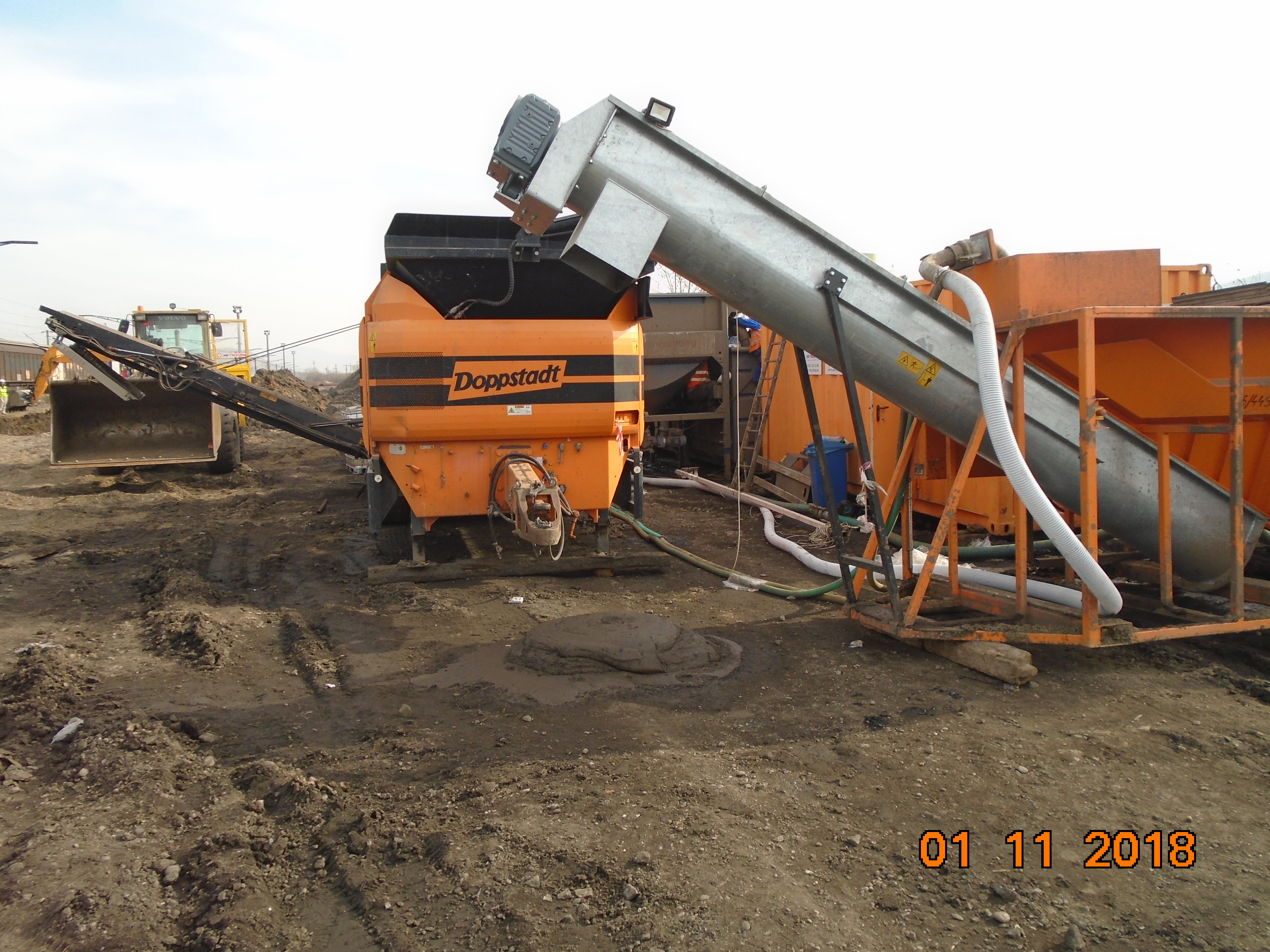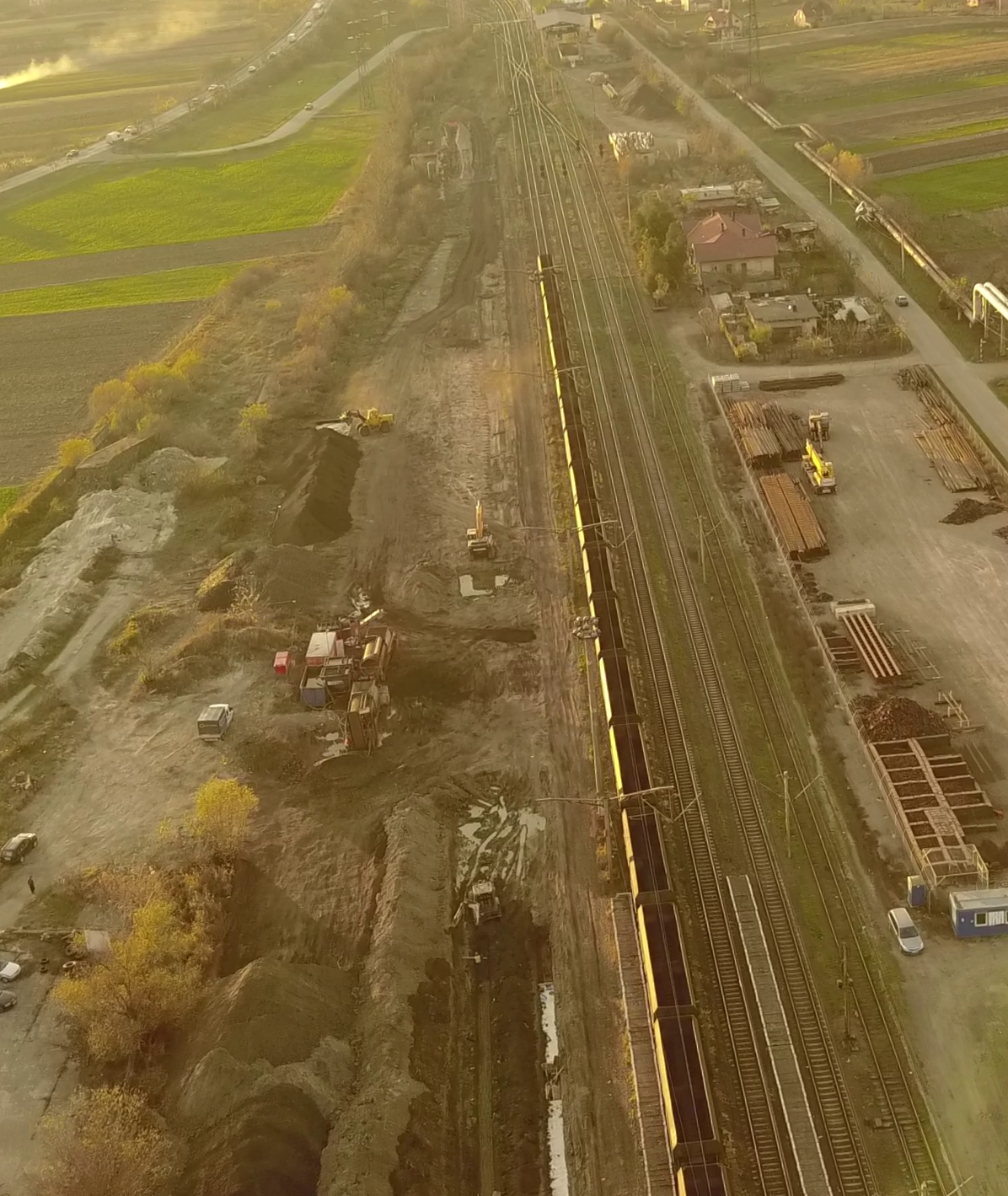Gurasada-Simeria Railway
Description of social and environmental performance.
Problem detected:
The railway lines, due to the passing of trains and the machinery used for their maintenance, contain moderate levels of pollution due to oils and fuels in their ballast. For the railway renovation project on the Frontier-Curtici-Simeria section of Pan-European IV corridor, an estimated 126,955 tonnes of contaminated ballast has been calculated.
The challenge has been to find a solution to process such a large volume of contaminated ballast, which ensures full recovery of the material in a reasonable time and without major deviations in the budget.
Solutions adopted:
The technical report of the project provided for the decontamination of ballast impregnated by petroleum products and heavy metals.
A decision was taken to decontaminate the ballast on site, with the aim of minimising the risk of dispersing the pollutant, using natural and non-toxic substances.
The first step was to separate the stone from the sand and other materials (wood, plastic, etc.). The decontamination of the stone was carried out with a specific machine, a Doppstadt SM 620 Trommel Screening Machine, in a closed circuit to collect the wash water, reuse it and dispose of it. The water used to clean the ballast continues to be reused again and again in the process and, if necessary, the circuit is refilled to the appropriate volume. Finally, the residues resulting from the washing are managed by companies authorised by the Romanian Accreditation Association.
Results:
The efficient technology selected by the work has managed to decontaminate the ballast in time and maximise its reuse.
The use of this machinery, compared to others used in the market, means a significant reduction in the volume of water used in the process and a very significant increase in the percentage of reusable stone material.
The initial target for reuse of materials resulting from decontamination was 50% and, following the use of this technique, the percentage of stone reused in the production process of the material for the railway substrate reached 100%.
In addition, decontamination of the ballast on site helps to minimise key environmental impacts, such as the risk of soil pollution in the collection areas and atmospheric pollution, as greenhouse gas emissions associated with the transport of the material are avoided.










